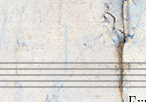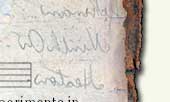












Biography
David Cope is Dickerson Emeriti Professor at the University of California at Santa Cruz (howell@ucsc.edu) where he teaches theory and composition, and Honorary Professor of Computer Science at Xiamen University (China). He also teaches regularly in the annual Workshop in Algorithmic Computer Music (WACM) held in June-July at UC Santa Cruz. He was born in San Francisco, California on May 17, 1941. Following early study on piano (including an extensive performance career) and violoncello, he completed degrees in composition at Arizona State University and the University of Southern California studying with George Perle, Halsey Stevens, Ingolf Dahl and Grant Fletcher. His over seventy published compositions have received thousands of performances throughout the U.S. and abroad, including those by the Vermont, Pittsburgh, Indianapolis, Cabrillo Festival, and Santa Cruz Symphony Orchestras, as well as numerous university orchestras and wind ensembles. His compositions include 9 symphonies, 6 string quartets, and 4 piano sonatas. Thirty-six of Cope's works appear on recordings including Variations (piano and wind orchestra; Cornell University), Re-Birth (concert band), Concert (piano and orchestra, Mary Jane Cope, soloist) and Threshold and Visions (orchestra). Complete albums of his music have appeared on Folkways (2), Opus One and Epoc Music (24) and include a wide diversity of works from large ensembles (his nine symphonies), to string quartets (six), to soloists with electronic and computer-generated tape.
Steven Mamula writes about Cope's work in a definitive article in the American Record Guide (May, 1982):
"David Cope is unquestionably one of this generation's most ambitious, prolific and multifarious composers. His music in a large measure is marked by tension, achieved through sharply dissonant, sustained tonal clusters, sporadic and impulsive phrasing, and wide skips in the linear movement. His textures are transparent, though not always sparse, and rhythms seem to fall at extremes: either subtle and almost not pulsating, or fiercely aggressive with frequent juxtapositions of both. David Cope's Concert For Piano and Orchestra (1980) exemplifies much of this essence. The work contains several passages that are a multilayering of single note drones played in succession by individual instruments. A crescendo builds as each instrument enters, creating an anxiety that approaches the teeth-grinding level. Much as in serial music, repose is achieved here not by succeeding dissonance with consonance, but rather by succeeding dissonance with lesser degrees of dissonance. The piano serves a minimal but judicious role, delivering angular, single line statements marked with huge leaps, and brief, repeated arpeggiations in the upper register that together produce a striking antithesis to the orchestral fabric. During the work's latter half, a furious, single note figure erupts at the piano's bottom end, which churns in syncopation soon imitated by numerous percussion instruments, followed by powerful crescendos in brass lines.
"For the past three years Cope has also been involved with creating a massive work (two hours) for single performer. The composer became interested in finding a place that he loved and that fascinated him, exploring its history, lore, religions, etc., and then creating a piece from that intimacy. Canyon de Chelley in Arizona has been such a place for him. He began by studying all published material on the Canyon's archaeological roots and art history (Anasazi art, petroglyphs primarily), as well as learning as much of the Navajo language as possible, then went to live for a time in the Canyon, exploring it thoroughly and continuously sketching musical ideas from the mountain of research. Also, during this time he built many instruments (not as a craftsman but as a composer, i.e., instruments not beautiful or masterful, since some contained only one note). Some were made with materials such as prayer stones and sheepbone mallets, though very few artifacts were removed and all with permission. Cope declares '...slowly but surely a piece is emerging, one so personal and intensely real that 'performance' hardly describes the results.' The title of his cosmically ambitious work is THE WAY."

